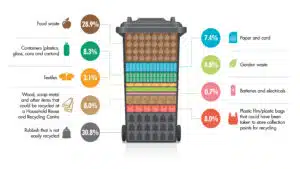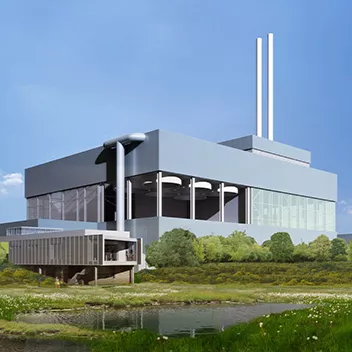
How you can help?
Don’t think you can make a difference? Think again! With 1 million residents across the SLWP region, it doesn’t take much at an individual level to make a big collective difference.
A detailed analysis* of the rubbish that is collected from households across the four SLWP boroughs has revealed that:

How does your bin compare? Could you be doing more to reduce the amount of recyclable items that end up in your rubbish bin?
Around half of the items that are in a typical rubbish bin could have been recycled using the councils’ recycling collection services.
* Data based on a waste composition analysis exercise conducted by Resource Futures in 2022. 35,331kg of recycling and waste was collected and analysed from a representative sample of 1,469 houses (using the standard ‘kerbside collection service‘) and 785 flats (using the ‘communal collection service‘).

Don’t think you can make a difference? Think again! With 1 million residents across the SLWP region, it doesn’t take much at an individual level to make a big collective difference.
Most preferred environmental option
Reducing waste is the most preferred option. Minimising the amount of waste we produce in the first place is by far the most effective way of reducing the impact we have on the environment.
When waste is created, the waste hierarchy prioritises reuse. Where possible, reusing products and materials before it becomes waste is the next best option. By cleaning, repairing and refurbishing items, we can significantly increase the number of things we reuse.
Recycling is the most environmentally sustainable solution when it comes to disposing of waste. Recycling essentially turns our waste into new items or products, reducing the amount of raw materials required.
For waste that can’t be re-used or recycled, energy recovery is the next best option. Energy from waste is the process of incinerating non-recyclable waste to produce electricity. It helps to reduce our reliance on fossil fuels for power generation and decreases carbon emissions.
At the bottom of the waste hierarchy is the least desirable option: disposal. This is when waste is either sent to landfill or treated in an older-style incinerator that doesn’t recover energy from the process. Disposal should always be the last resort for waste.
Least preferred environmental option


